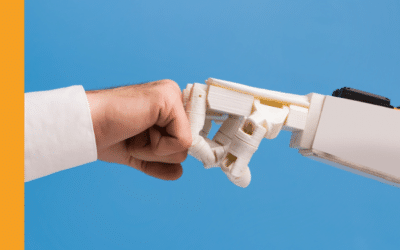Nowadays, we are presented with an abundance of different teaching and learning techniques that aim to improve knowledge acquisition and retention levels. While some of these are passing fads, others have been scientifically proven to work, such as gamification.
This method of training has caused quite a stir in recent years, as it not only delivers results, but can also be highly entertaining and enjoyable for the individual learning. When you compare gamification to traditional training techniques such as classroom teaching or office-based learning, it seems like a no brainer.
However, understanding gamification and knowing how to introduce it is another matter. Several businesses won’t be fully aware of what is involved with this teaching technique or how it can be implemented to training situations. That being the case, here is a guide for getting started with gamification.
What is gamification?
Gartner recently defined gamification as:
Game mechanics refers to elements including points, badges and leader boards that are commonplace in several video games, while experience design describes the journey a player takes, facilitated by narratives and story lines. As opposed to physically interactions, those playing games digitally engage with computers, smartphones or other devices.
The basic aim of gamification is to motivate individuals to develop their skills, evoke innovation, and ultimately change behaviours. This is made possible by enabling players to achieve their goals, which are aligned with organisational aims and objectives.
Understanding gamification
Gamification draws upon behavioural science, motivational theory, video game design and human psychology to engage individuals, provide entertainment, teach pieces of information and change ways of thinking. The social network LinkedIn and online retailer Amazon have both gamified their systems to attract the user’s attention, get them involved, have some fun and finally influence action.
The very nature of gaming makes it perfect for performing and tracking training. Games reward players for doing well, which encourages the user to progress. But in order to issue prizes or awards, the game needs to track and monitor activity. This is often presented in the form of leader boards, rankings and scores, which gives businesses a hugely useful and valuable insight into employee performance.
As opposed to traditional methods of evaluation, which tend to take place after training has taken place or are simply based on instinct, gamification provides real-time analysis. This is not only beneficial at an organisational level, but for individuals as well. Players can receive immediate feedback on their performance, know how peers are getting on and gain motivation to improve.
Therefore, individuals understand where their learning is going, managers gain an accurate picture of employee performance and competency, while the whole organisation knows whether training is working or not. Due to this comprehensive level of data and knowledge, gamification should not be viewed as the latest training craze. In fact, it has the power and potential to revolutionise how business is conducted as well as the training and evaluation of employees.
If gamification sounds like the type of training your business could benefit from, think about the following:
Look for, study and play various applications
Do some research, find out what kind of applications are currently available, and see whether they would be beneficial for your business. However, playing or interacting with an app for just a few minutes won’t give you a greater understanding of a particular subject straight away. Nor will it immediately help you discover the value it could bring to your training. So, take your time, think about the advantages and disadvantages of implementing gamification, see what types of application would be best for the business and come to a reasoned conclusion.
Wranx has worked incredibly hard to deliver scientifically proven games that help employees learn. Our training solution is very flexible, giving you the tools to change subject topics remotely and set specific time limits to encourage delivery. Games are played and completed over a prolonged period of time, which helps employees move knowledge over to their long-term memory.
Change your own way of thinking
Even though gamification can bring about a behavioural change in employees, you should alter your own way of thinking when it comes to implementing this training technique. As opposed to traditional teaching methods, gamification is meant to be a lot more entertaining, engaging and fun. Therefore, have a playful attitude, be curious and don’t restrict yourself. While a return on your investment is important, employees should feel confident and comfortable in their job role, which can be helped by gamification. After all, a happy worker is a productive worker.
Wranx has recognised the effectiveness of gamification in training situations, but also knows that pleasure is equally important. With over 300 different achievements to win, which can be acquired by demonstrating knowledge in topics determined by you, employees are motivated to learn but also have fun at the same time. On top of that, members of staff can take part in training on desktop and mobile devices whenever they feel like it, adding even more enjoyment to the experience.
Introduce an element of competition
In certain games, the user will play against the computer and try to outwit this inanimate machine. While this exercise may help growth and aid progression to some extent, it is much more beneficial for employees to compete against each other. Humans have a natural instinct to compete with their peers and contemporaries, which gamification can take advantage of and capitalise on. Create challenges for your workforce, introduce an element of competition and encourage employees to work hard for rewards.
Wranx is a great believer in the power of competition, which is why rankings and leader boards are a part of our gamification solution. Employees can compare achievements to promote rivalry, while simple incentives encourage workers to focus on delivery. All the while, you’ll be receiving valuable back-end data to measure knowledge and retention.
Regardless of the hype that surrounds gamification today, it can potentially be a cornerstone of your business’ training approach and activity. Playing games, providing incentives and creating competition is scientifically proven to assist with learning and development.





